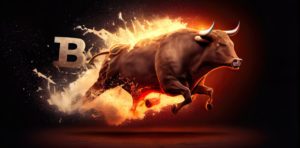- Reading time: 2 mins 55 secs
NFTs have been around for about ten years, but it’s only recently that they have really taken off.
They are the current big thing in the crypto ecosystem.
The question is, where will they go from here?
They have started to make a mark in blockchain gaming for one thing.
And also appearing as digital artwork and other collectables, NFTs are starting to be adopted as:
Domain names
Real-estate
Digital Art
Degree certificates
Tickets for events
And even essays.
As NFTs evolve, they could become the deeds to your car.
You might one day buy your house using NFTs!
The biggest challenge in both the gaming and NFT worlds is how the value of the NFTs will be monetised in the real world.
Also, how the utility will be identified in the on-chain assets which are being offered.
As we know, the NFT world is moving forward with monetising such things as music albums to stop illegal downloads and bring this into the real world.
But what else might be monetised?
When it comes to blockchain gaming we saw a flood of users during the bull market due to the growth in the value of the asset, like on MANA, SAND for example, but now in the bear market, there is not that numerical value in the asset i.e the price has fallen.
What we are seeing now is the user base of users playing for the experience rather than gaining in the price of the token or coin.
The challenge developers foresee is how to start drawing in new users when the price of the token or coin isn’t generating an organic user base.
We, therefore, need to take into consideration how experienced are the teams, not in only developing games but actually marketing the game.
Another challenge in the gaming world involves the interoperability between numerous games and how on-chain assets can be used on cross-chain games.
Right now, this is a roadblock a lot of games are facing.
The last challenge gaming faces is the selling of on-chain assets, therefore, increasing supply/decreasing demand, thus affecting the value of the project itself. For example, let’s say you have a virtual sword in a game and want to sell it.
If there are many swords on sale, it disincentivises people from playing the game to win a sword or buying it from the game company, as they can readily buy them from other players.
To overcome this a lot of games have now frozen on-chain assets, therefore, managing the supply coming into the market, manipulating the supply/demand, and therefore holding the value of the project.
The conclusion we have come to here at Investment Mastery is that the NFT and gaming world are still in an early phase.
We expect to see a lot of projects fail.
One thing we are looking into as part of our ongoing analysis and investigations in NFTs is how we can distinguish utility of the asset as this will be different to the way we consider utility in coins such as ETH, BNB, for example.
We also need to focus on the team’s experience as creators of games and what their marketing strategies will be.
Because they need to create an organic user base to create a sustainable ecosystem which is not changed when prices are increasing/decreasing.
For us investors, one of the biggest plays is going to be finding a project which helps create interoperability between different games/NFTs which are on different blockchains.



